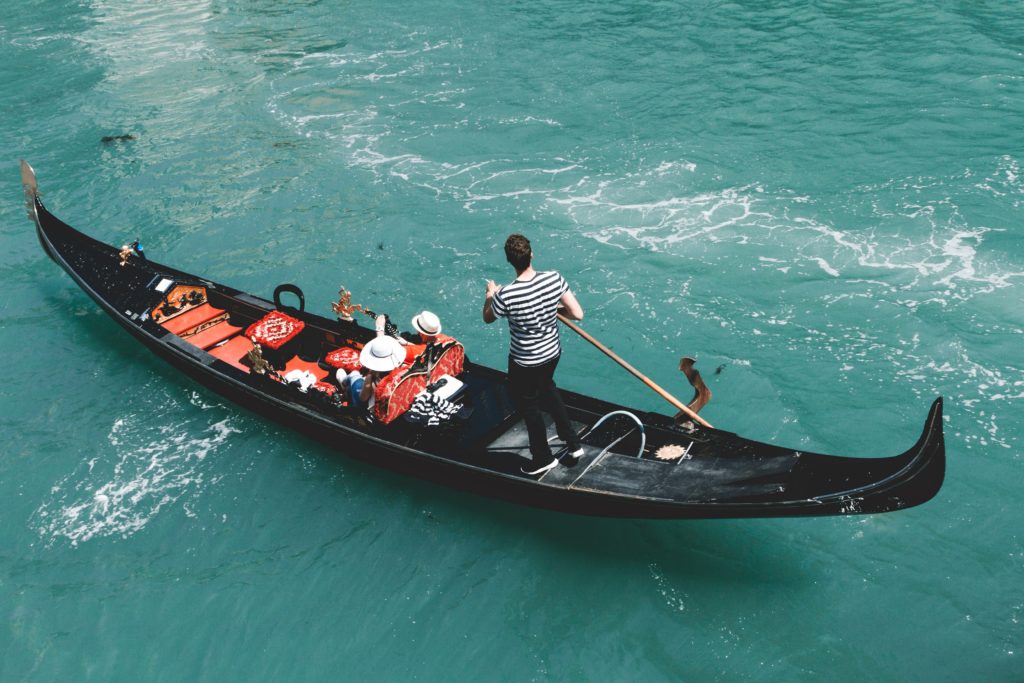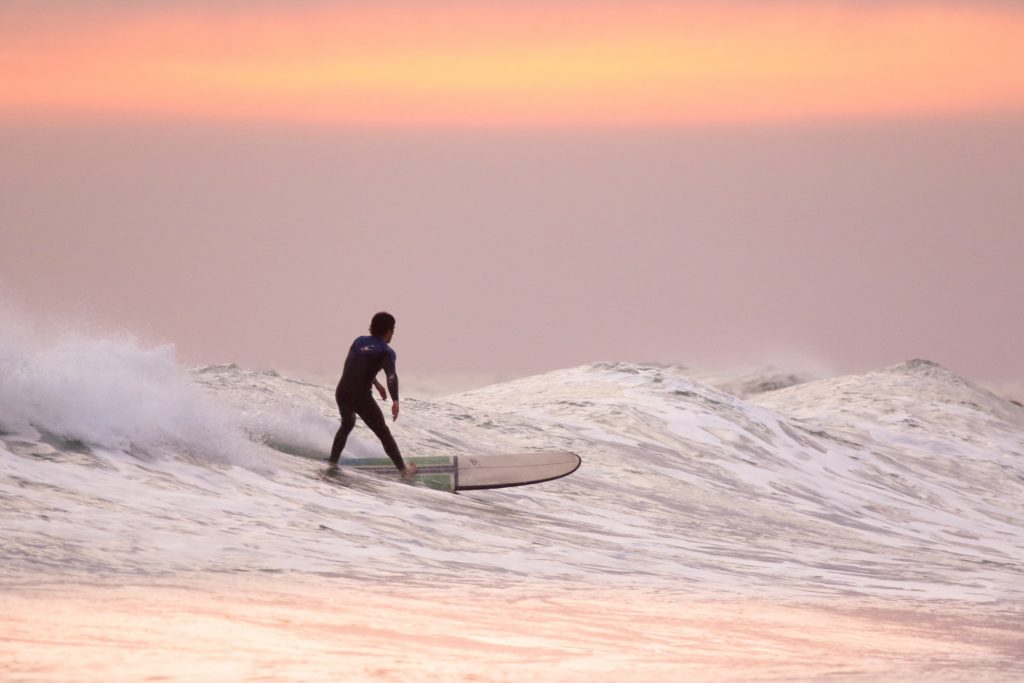
Whether you’re standing on the beaches of California or watching the Olympics on television, it’s difficult not to gaze in awe as daring surfers dominate fierce waters. Surfing, however, is only one form of paddleboarding. A 2015 survey conducted by the Outdoor Foundation estimated that at least 2.8 million Americans participate in stand-up paddleboarding. The median bracket included people well into their forties. A question that repeatedly comes to mind is who invented paddleboarding?
Some of the surveyed paddleboarders enjoy the adrenaline rush of catching a wave. Others are more practical, using their board as a fishing raft. Still, others find their calm on the board, holding yoga positions surrounded by the sea. No matter how we enjoy paddleboarding, who do we have to thank for inventing and popularizing it?
Stand-up paddleboarding is unique among sports in that it has no single inventor or birthplace. Where games like basketball had one primary inventor, modern paddleboards were derived from different cultures and people simultaneously. They may have used their boards for various purposes, but they relied on the same principles of physics and athleticism. Keep reading and join us as we explore the origins of paddleboarding.
Predecessors of Paddleboarding
Paddleboarding in Peru, China, and Africa
Paddleboards have been around for several millennia, and historians do not know who were the first people to use them. Their closest guess is the indigenous Moche people, who settled in Peru around 3000 BC. Fishers prepared for their daily catch by building a Caballito de Totora, or “little horse of the cattails,” from reeds harvested in the nearby Huanchaco swamp. These vessels were fragile with pronounced ends, tied together with loops of string. Though they were buoyant for the purpose, they needed some guidance to ensure they did not venture into deeper waters. Slender bamboo oars accompanied each Caballito on fishing voyages. Fishers sometimes left the oars behind to surf in their leisure time.
Like their Peruvian counterparts, the ancient Chinese and some African tribes used makeshift paddleboards for fishing and hunting along the continent’s fertile rivers. These boards were more akin to a kayak or canoe than a raft. Cunning soldiers may have used them to launch a crafty, covert water offensive.
The Hasake as an Evolved Paddleboard
Paddleboarding became more refined in the Muslim world sometime between 800 and 1300 AD. However, it retained its practical purpose. Persians, Egyptians, and Levantine people used boards called hasakes for net fishing and spearfishing in shallow waters. These boards took a more traditional boat shape, with a simple keel to keep them afloat and upright.
Though the hasake’s width and sturdy, stable design made it ideal for fishermen, it also enabled many other uses. It was not unheard of for Renaissance Arabs to use hasakes as a mode of transport. Civil workers and lifeguards also used them to rescue people far from shore.
Today, you can still find hasake vendors near the beaches of Israel, even if heavy-duty plastic and fiberglass have replaced the traditional wood. They maintain their tried-and-true shape, though some are slightly narrower for a better surfing experience.
Paddleboarding in Italy

Meanwhile, across the Mediterranean Sea, the merchants and residents of Venice embarked on their daily business. Where today we usually think of gondolas navigating the city’s canals and waterways, the Venetians of the 17th and 18th centuries used a form of paddleboard for the purpose. Though the paddleboards had a more compact form factor over gondolas, they still required an incredible amount of skill to maneuver. Perfect right angles and biting winds could cause accidents if a captain weren’t paying attention, and it was important for them to know how to stop on a dime.
Paddleboarding in Hawaii and Polynesia
No history of paddleboarding would be complete without exploring Polynesian traditions. Where many other civilizations used their boards for hunting, fishing, and transportation, native Hawaiians on the islands of Maui and Kauai were one of the first groups of people to enjoy purely recreational paddleboarding.

Papa he’e nalu, as Hawaiians called their boards, were divided into four principal types. A paipo rider was an ancient boogieboarder: they laid prone on the board to catch nearby waves. Kiko’o, alaia, and oio boards were stand-up surfboards of increasing size. The construction of each board of koa, a strong acacia wood, or wiliwili, a lighter wood. The more skilled you were as a surfer, the more esteemed you were in the tribe and the larger board you owned. Tribal chiefs, therefore, owned the largest boards and were considered the best surfers.
In his journeys through Hawaii and Polynesia, Captain James Cook documented how surfing was religious exercise. It was not just a recreational pastime. Priests would bless new surfboards for the ruling class. Surfers would ask the gods to grant them powerful waves and the courage and protection to battle them.
The Modern History of Paddleboarding
Modern Paddleboarding in Hawaii
In mid-20th century Honolulu, the history of paddleboarding split from surfing with three surf instructors on Waikiki Beach. Bobby Ah Choy and his brother Leroy were members of the Waikiki Beach Boys club alongside the elite surfer Duke Kahanamoku. Following the example of their aging father John, the Ah Choys brought a canoe paddle with them to navigate more slowly in the water. This enabled them to keep a better eye on their students and the incoming waves. Kahanamoku copied the trend with his classes, and “Beach Boy Surfing” was born.
Despite winning the favor of the Big Kahuna Kahanamoku, stand-up paddleboarding remained a subtle sport for much of the century. Older surfers, casual beginners, and those with mobility impairments used it on their own time to enjoy the waves.
Hamilton and Kalama in the ’90s and ’00s

Laird Hamilton is known for his daring lifeguard rescues, and successful surfs of the deadly Teahupo’o and Pe’ahi breaks. He also pioneered innovations to improve surfing accessibility, creativity, and instruction. While his best-known technique was tow-in surfing, he and fellow competitor Dave Kalama also helped to popularize stand-up paddleboarding in the Waikiki Beach Boys tradition.
Hamilton found paddleboarding in the search for new practice techniques. When the waters of Malibu were too calm for the big waves he preferred, he would embark on his surfboard with a paddle in hand, riding the smaller waves that found him. One of Hamilton’s best-known official photographs depicts him with an American flag attached to his paddle. It was a picture that swept the nation, convincing a host of amateur paddleboarders to join in on the new watersport.
While Hamilton still reserves his paddleboard for training, Kalama capitalized on the craze and opened a small manufacturer with his son in Maui. Today, Kalama Performance ships stand-up paddleboards around the world. Dave himself teaches others how to paddleboard as a private instructor.
Summary
There is no single answer to who invented paddleboarding. Throughout its history, it evolved across cultures to become both an art and a science, a tool to find food, and a means to find faith. As international surfing organizations begin to recognize competitive paddleboarding, Hamilton, Kalama, and its modern-day pioneers will continue their innovations. Paddleboards will keep evolving, finding new purposes, and catching new waves.
Related Posts
-
10 Best Places to go Canoeing in Michigan
The abundance of lakes and rivers makes Michigan one of the finest destinations to visit. Although surrounded by beautiful lakes, the rivers here are the canoeing hotspots for people hoping to get in their groove. This listicle features the best spots for you to visit on your next canoeing edition in Michigan. The many calm…
-
10 Best Places To Go Kayaking In Arizona
Arizona is popular in the Kayaking community for the many rivers and lakes in their different shapes and sizes. The state has something for everyone and non-kayaking enthusiasts can tag along to the grand canyon, one of the world’s natural wonders, located in the north. There are over a hundred lakes and five major rivers…
-
10 Best Places to Kayak in Iceland
Thanks to the excellent water bodies, beautiful scenery, sweeping glaciers and smoky mountains, Iceland- the land of fire and ice, has become a perfect getaway destination. One of the most enjoyable pastimes for visitors and locals in the country is kayaking. So if you are visiting there as a tourist or a local looking for…
